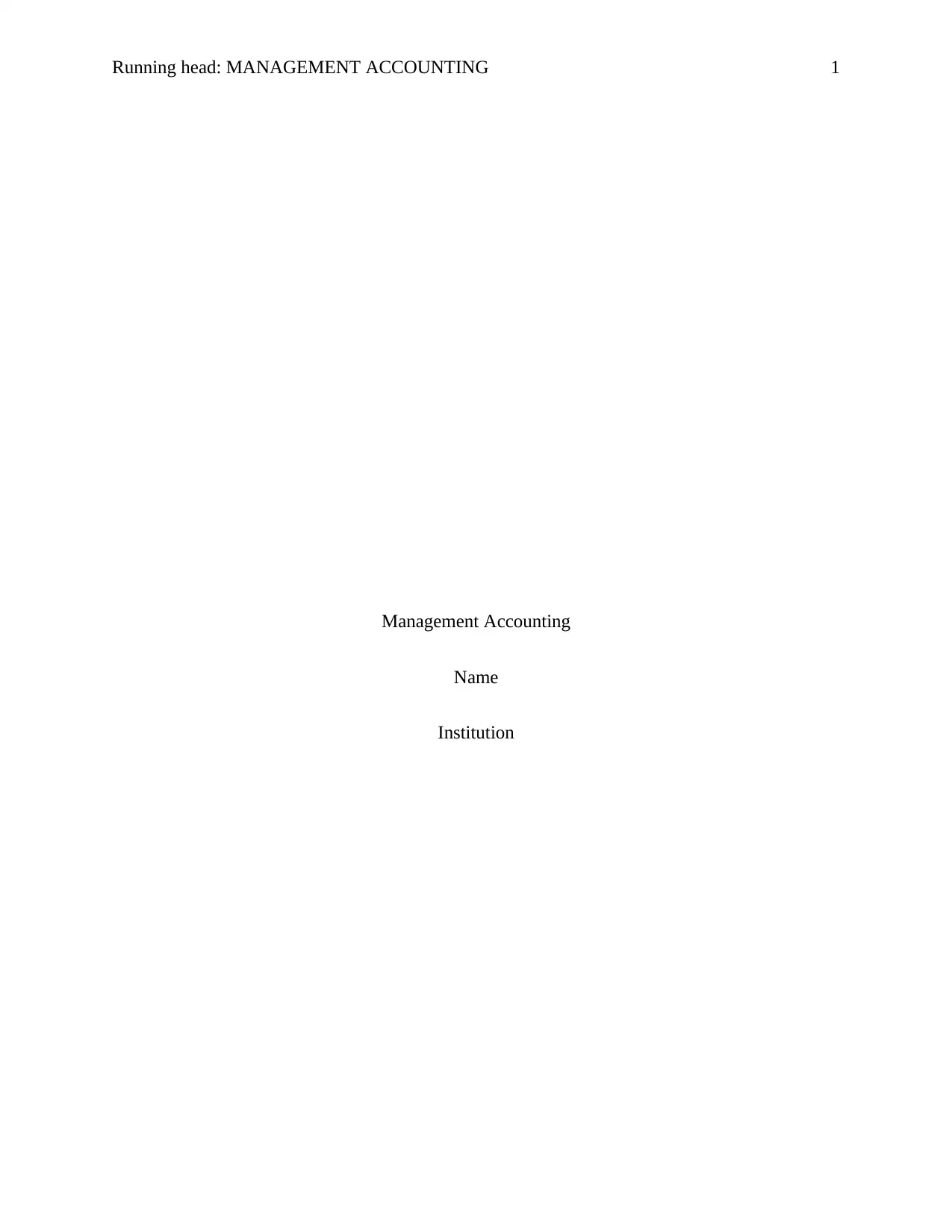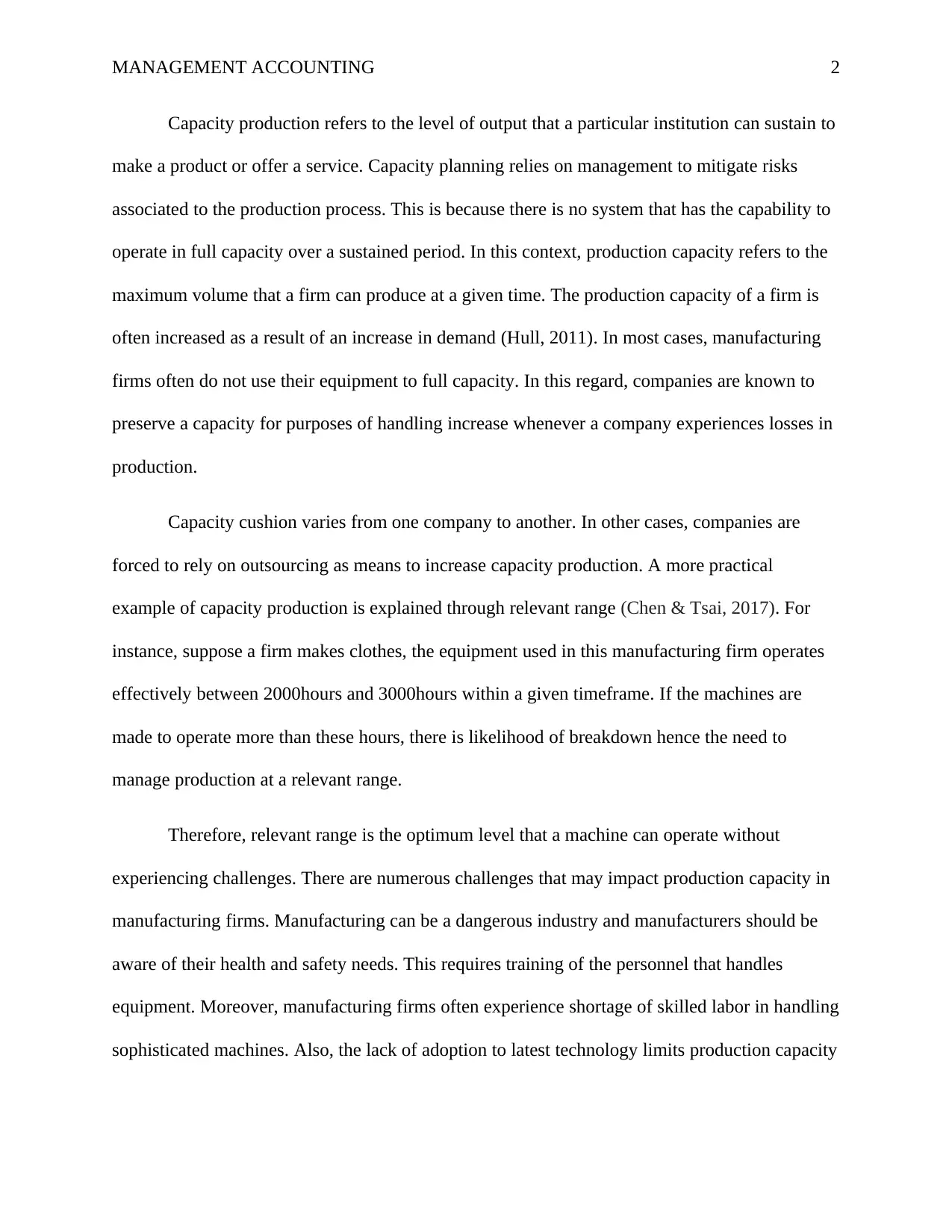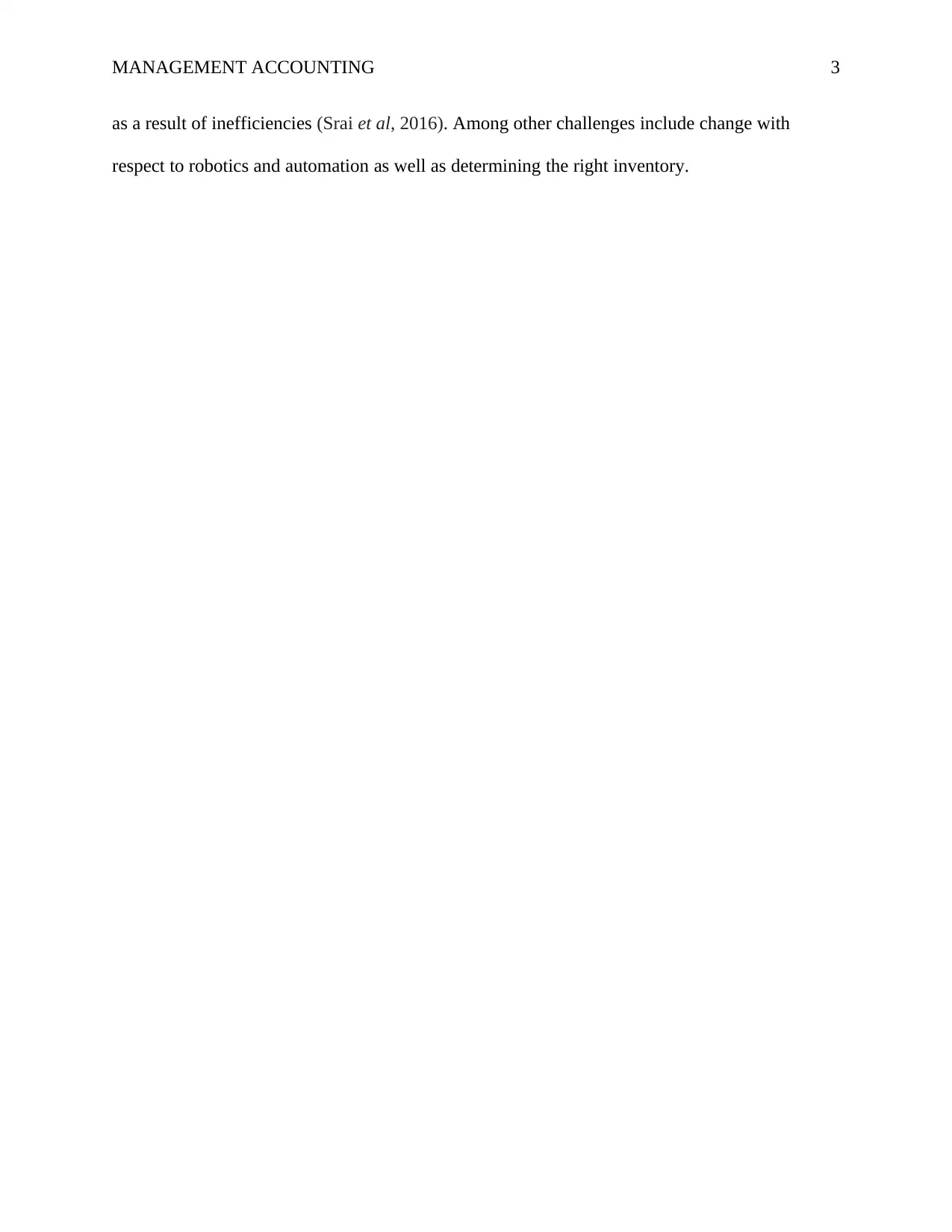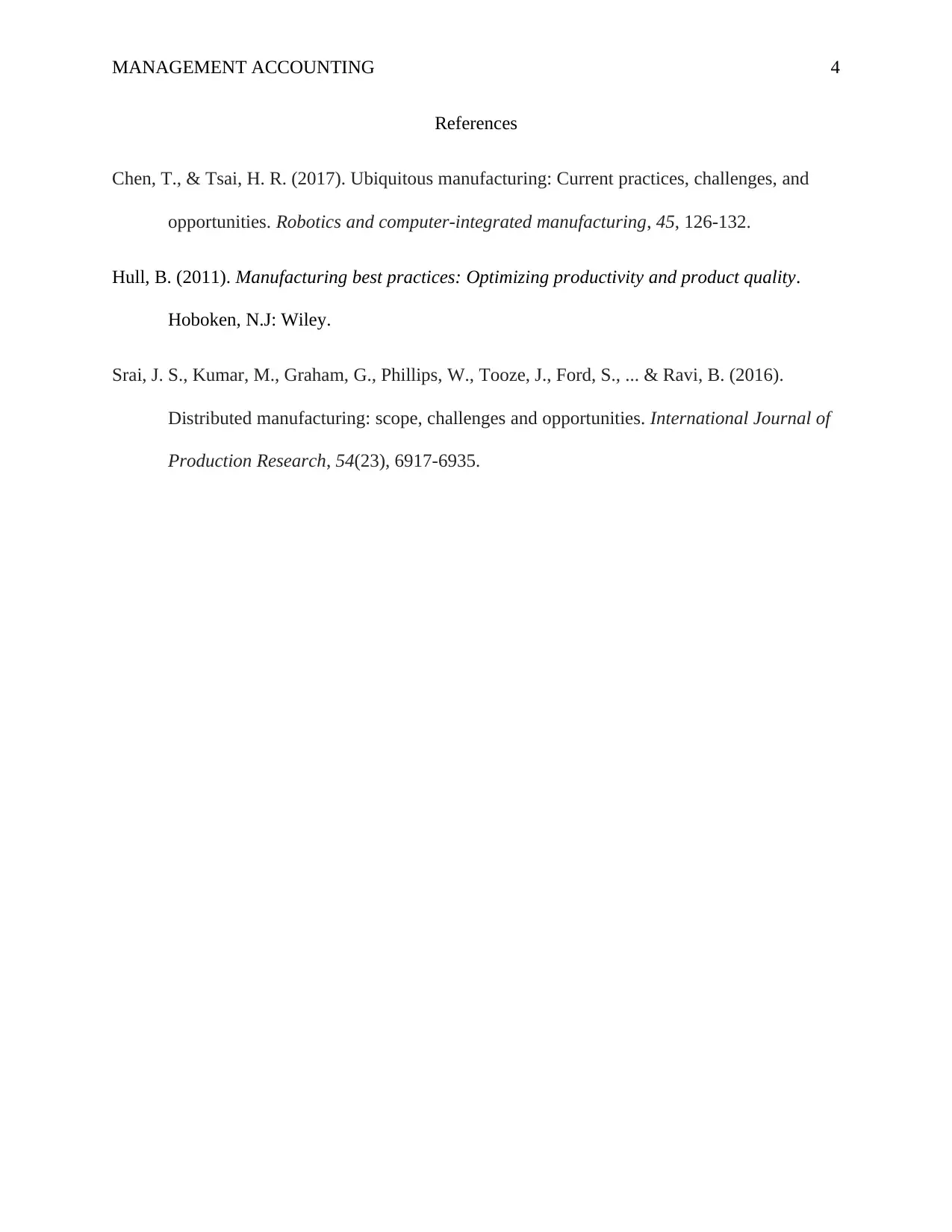Production Capacity, Relevant Range, and Manufacturing Challenges
VerifiedAdded on 2023/01/16
|4
|495
|77
Report
AI Summary
This report delves into the concept of production capacity within a manufacturing environment, exploring both theoretical and practical capacities. It examines how firms manage capacity planning to mitigate risks and maintain optimal production levels. The report discusses the 'relevant range' concept, illustrating how it defines the operational boundaries for equipment efficiency. Furthermore, it identifies several constraints that impact a manufacturing company's productive capacity, including labor shortages, technological limitations, and the challenges of automation. The report provides a comprehensive overview of capacity management and its implications for manufacturing firms, making it a valuable resource for students studying management accounting.
1 out of 4











![[object Object]](/_next/static/media/star-bottom.7253800d.svg)